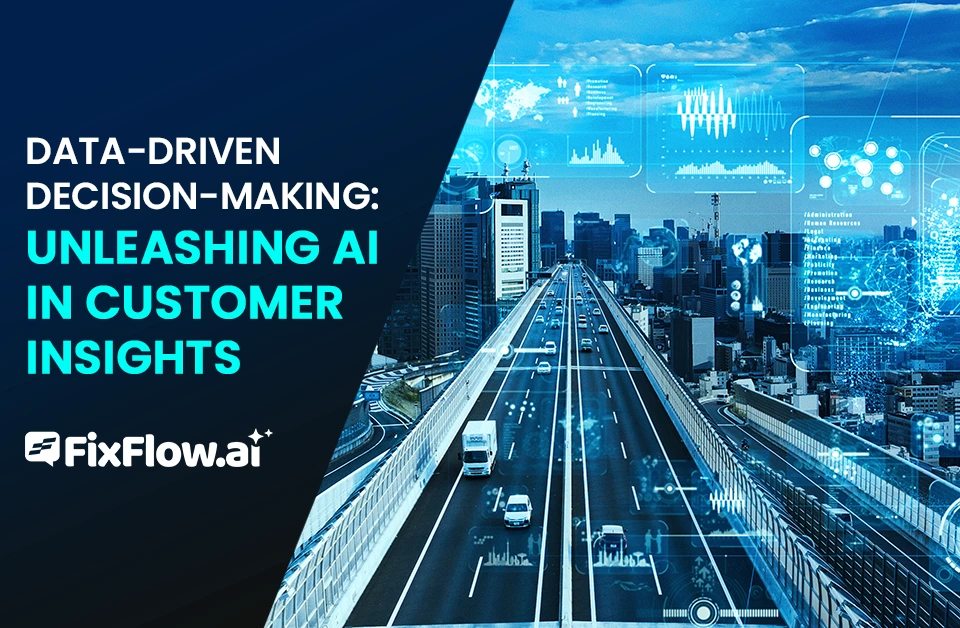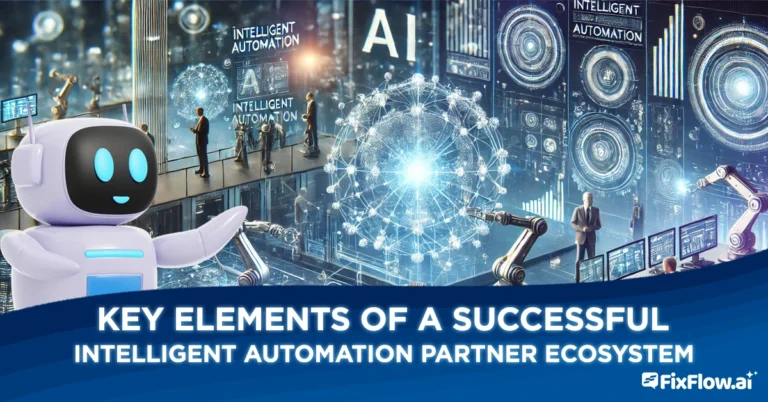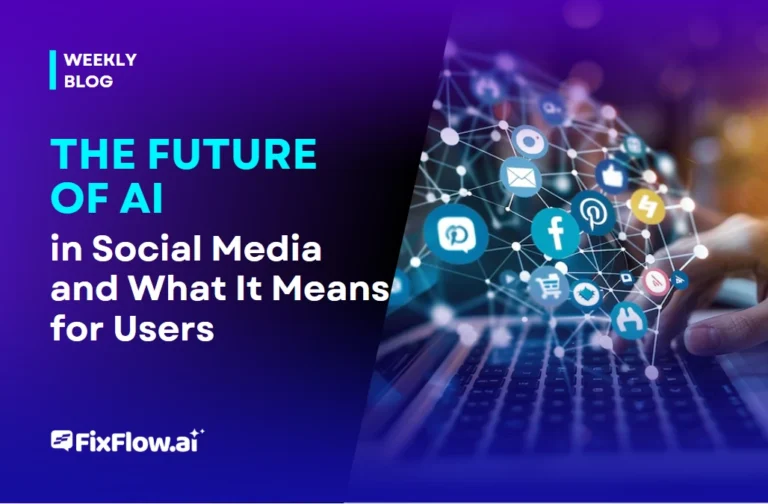Data-Driven Decision-Making: Unleashing AI in Customer Insights
In today’s fast-paced business environment, AI is essential in data-driven decision-making, transforming raw data into insightful customer insights. With AI, you can deeply understand your customers by predicting their needs and behaviors through predictive analytics. Data integration will allow you to view your customers, enhancing personalization and satisfaction. Overcoming data governance and scalability challenges is crucial to maintaining efficiency and accuracy. AI’s real-time processing capabilities promise personalized marketing and improved user experiences. To unlock the full potential of AI and elevate your business strategies, there’s a journey toward mastering these transformative technologies.
Understanding Data-Driven Strategies
Understanding data-driven strategies is crucial for staying competitive in today’s fast-paced business environment. You need to harness the power of data analytics to decode customer behavior, enabling your business to make informed decisions. By diving into data, you gain actionable insights to transform your approach and drive success. Predictive modeling is vital, allowing you to anticipate trends and align your strategies accordingly.
To master data-driven decision-making, focus on how data visualization can help interpret complex datasets. It lets you see patterns and relationships that might go unnoticed, providing a clearer picture of your customers’ behaviors and preferences. This visual clarity empowers you to make more accurate decisions, ultimately improving your business outcomes.
Furthermore, understanding customer behavior through data analytics isn’t just about gathering information—it’s about translating this data into actionable insights. By leveraging predictive modeling, you can forecast future behaviors and prepare your business to meet emerging demands. Remember, the goal is to turn data into a strategic asset that informs every aspect of your decision-making process. Embrace these tools, and you’ll stay ahead in an ever-evolving marketplace.
Harnessing AI for Deeper Insights
Leveraging AI for deeper insights revolutionizes how businesses understand and engage with customers. With artificial intelligence, you can dive into customer insights like never before. It’s not just about collecting data; it’s about making sense of it to drive meaningful action. Predictive analytics lets you anticipate customer needs and behaviors, turning data into foresight. This proactive approach ensures you’re always one step ahead, tailoring your strategies to meet evolving demands.
Data integration is crucial to harnessing AI’s full potential. Combining diverse data sources creates a holistic view of your customers. This comprehensive perspective enables finer levels of personalization, transforming generic interactions into tailored experiences that resonate personally with each customer. It’s about delivering the right message at the right time through the right channel.
AI enhances and deepens what you know about your customers. By leveraging these technologies, you can transform raw data into actionable insights that drive your business forward. In a world where customer preferences shift rapidly, staying informed and adaptable is key. AI empowers you to do just that, ensuring lasting customer engagement.
Transforming Customer Experience
Though transforming customer experience with AI might initially seem daunting, it opens up unparalleled opportunities for creating meaningful interactions. By embracing a data-driven culture, you can leverage AI to revolutionize how you connect with customers. Insight generation becomes seamless as AI algorithms analyze vast amounts of data, enabling you to understand customer preferences and behaviors like never before.
With AI, customer profiling is elevated to new heights. You can create detailed, dynamic profiles for personalized experiences tailored to individual needs. This goes beyond basic demographics, diving into behavioral patterns, purchasing history, and sentiment analysis. As a result, each interaction feels more personal and relevant.
Algorithm optimization plays a crucial role in refining these insights. AI continuously learns and adapts, ensuring that the most accurate and up-to-date information is at your fingertips. This leads to improved decision-making and proactive strategies that enhance customer satisfaction. Implementing AI-driven solutions helps you anticipate customer needs, resolve issues swiftly, and offer customized recommendations.
Incorporating AI into your strategy transforms the customer experience and positions your business at the forefront of innovation, fostering loyalty and long-term success.
Overcoming Challenges With AI
Amidst the excitement of what AI can do for your business, overcoming challenges with AI is crucial for success. You must address data governance to ensure your data management processes are robust and compliant. It’s not just about collecting data; it’s about maintaining data accuracy and integrity. Without accurate data, your AI insights could mislead decision-making, impacting customer satisfaction and business outcomes.
Another hurdle is scalable solutions. As your business grows, your AI systems must adapt without losing efficiency. This means investing in infrastructure that supports seamless integration and scalability. Automated reporting can play a vital role here, allowing you to evaluate performance consistently and make necessary adjustments quickly.
Don’t underestimate the value of customer feedback in refining your AI strategies. It’s a rich source of insights that can drive improvements and innovation. Collecting and analyzing this feedback helps you tailor your AI systems to meet customer needs better, ensuring that your data-driven decisions remain relevant and effective.
Future Trends in AI Insights
As you’ve tackled the challenges associated with AI implementation, it’s important to keep an eye on the horizon of future trends in AI insights. Artificial intelligence is rapidly evolving, and its customer segmentation and predictive analytics capabilities are expanding. AI will become even more integral in analyzing market dynamics and performing trend analysis, allowing businesses to anticipate shifts and adapt strategies proactively.
AI’s ability to process vast amounts of data in real time will enhance its application in customer segmentation, enabling more personalized marketing efforts. Predictive analytics will become more sophisticated, providing deeper, forward-looking insights to guide strategic decisions. Imagine foreseeing customer needs and behaviors with greater accuracy—this is where AI is heading.
Additionally, integrating AI with other emerging technologies, like the Internet of Things (IoT) and blockchain, will open new avenues for gathering and analyzing data. As AI systems become more autonomous and capable, they’ll offer unprecedented insights into market dynamics, helping you stay ahead of the competition. Staying informed about these trends ensures you can harness AI’s full potential, driving your business forward in this data-driven era.
Frequently Asked Questions
How Can Small Businesses Implement AI Without Extensive Resources?
You might think AI requires a big budget, but it doesn’t have to. Start by using affordable AI tools like chatbots or email marketing automation. Leverage cloud-based AI services that don’t demand heavy infrastructure. Focus on areas like customer service or social media analytics that AI can quickly impact. Prioritize training your team on these tools to maximize their potential without stretching your resources.
What training is required to use AI tools effectively for insights?
You’ll need a blend of technical and analytical training to use AI tools for insights effectively. Start by grasping the basics with foundational data science and machine learning courses. Then, familiarize yourself with AI platforms through online tutorials and workshops. It’s crucial to understand data interpretation and visualization. Consider hands-on practice through projects or hackathons, and stay updated with the latest AI trends to enhance your skills continually.
How Does AI Affect Traditional Marketing Roles and Responsibilities?
You’re navigating a shift in marketing roles with AI’s influence. Traditional tasks like data analysis and trend prediction are becoming AI-driven, freeing you to focus on strategy and creativity. AI automates customer segmentation and personalization aspects, requiring you to adapt and learn new skills like AI tool proficiency. Instead of routine tasks, you’re now steering data-driven strategies and ensuring that the human touch in customer interactions remains vibrant and impactful.
Are There Open-Source AI Solutions for Customer Insights?
You may be wondering if there are open-source AI solutions for customer insights. There are several options available. Platforms like TensorFlow, Scikit-learn, and Apache Mahout offer robust tools for analyzing customer data. These solutions allow you to customize algorithms for business needs without hefty costs. With open-source, you’re empowered to experiment and implement AI-driven insights, enhancing your decision-making capabilities while keeping expenses in check.
How Can Companies Ensure Unbiased AI Algorithms in Decision-Making?
To ensure unbiased AI algorithms in decision-making, you should start by diversifying your data sources to prevent inherent biases. Regularly audit your AI models for fairness and inclusivity and involve diverse teams in development. It’s crucial to implement transparency in how algorithms work and make decisions. Additionally, continuously monitor and adjust algorithms based on performance metrics to address any unintended biases that may arise over time.







